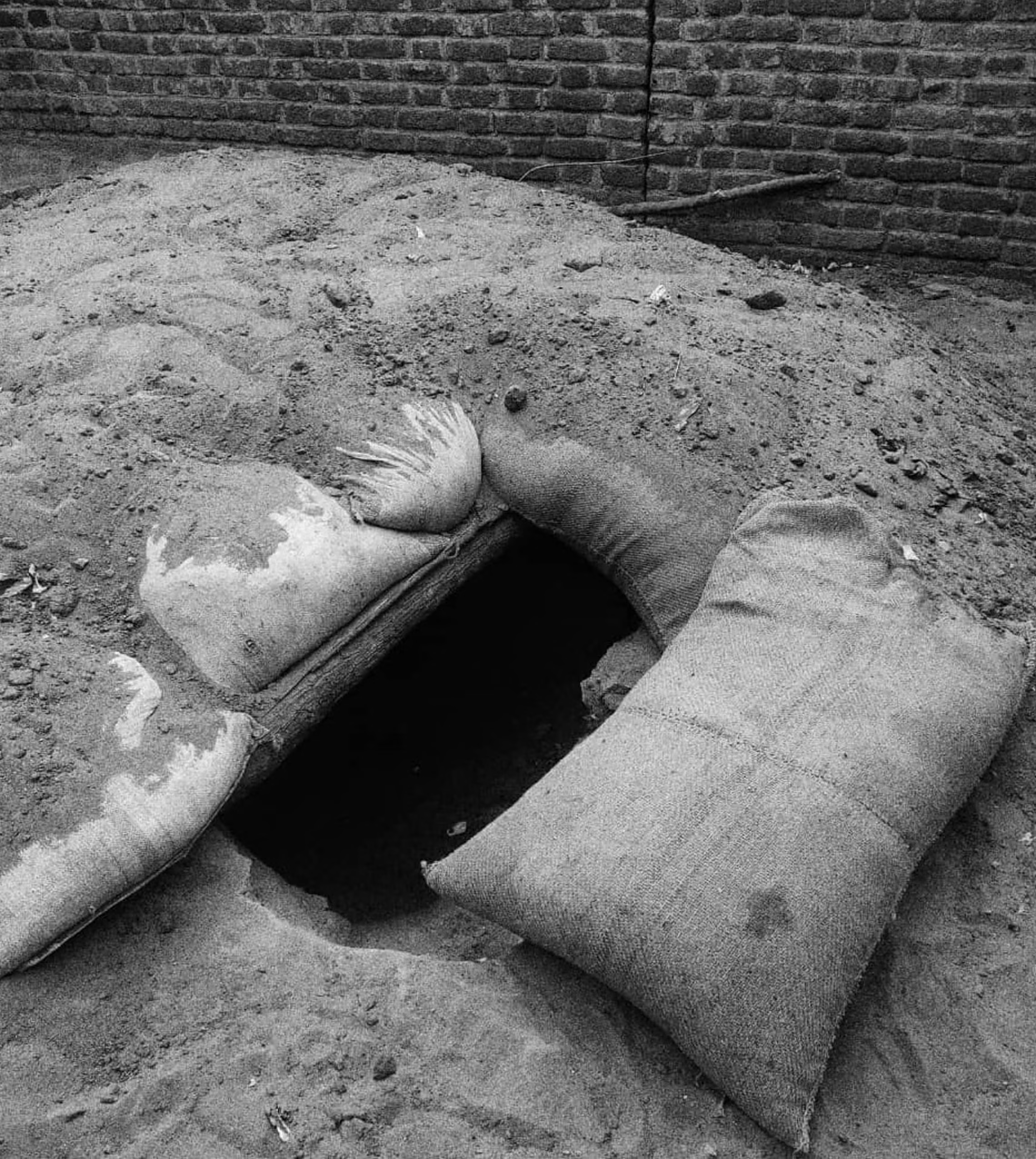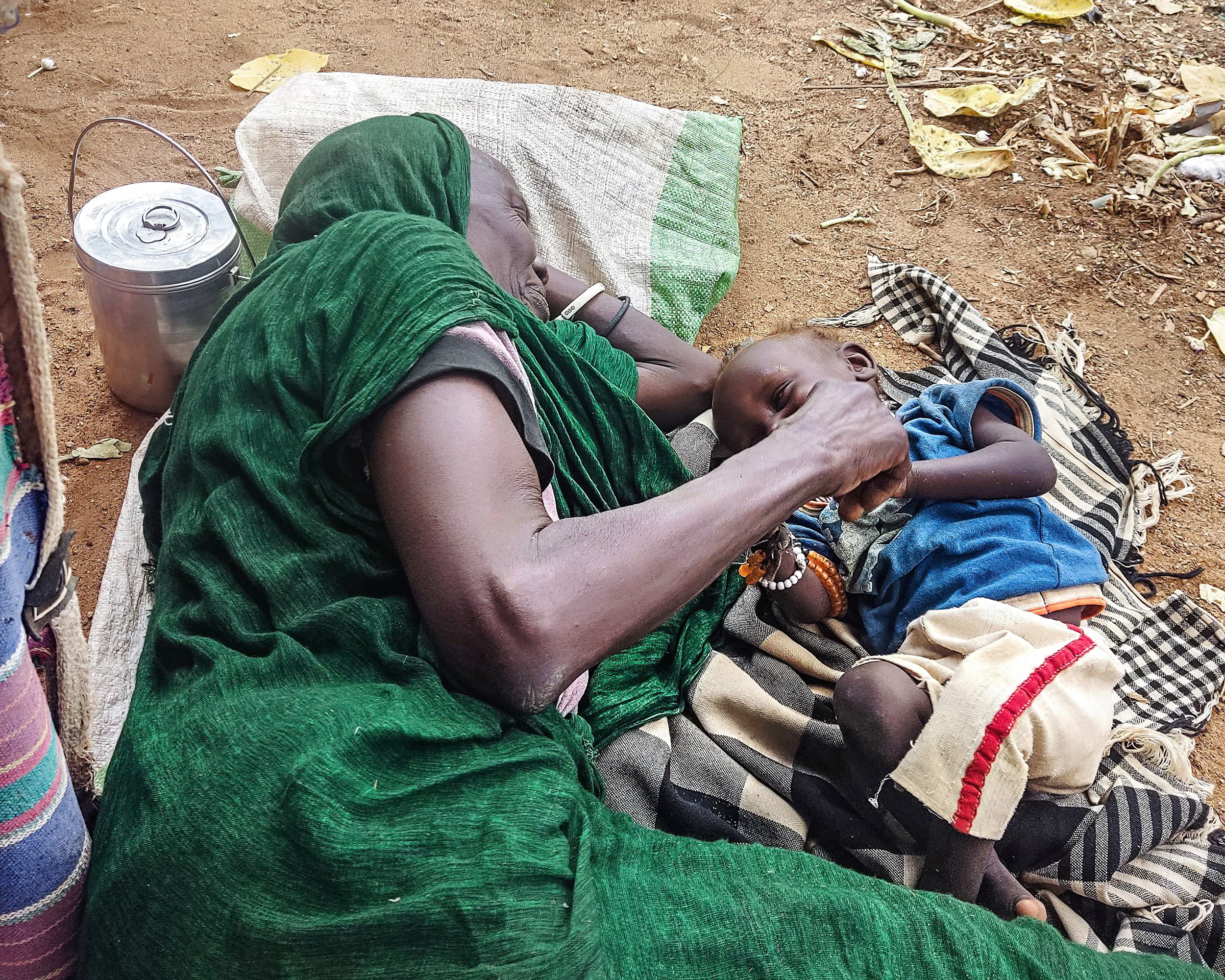For 17 months, beginning in May 2024, El Fasher, the capital of North Darfur, has been at the center of one of the longest sieges of modern warfare. It is a slow war of annihilation, marked by destruction and hunger at once.
The siege, steadily tightened by the Rapid Support Forces (RSF), has transformed the city. Streets are cut by trenches, civilians move block by block in search of shelter, and makeshift self-defense groups fight alongside garrisons. Over this period El Fasher has become a compressed version of Sudan’s war: a place where the old tactics of siege and starvation collide with new weapons. Drones and recently imported systems have turned the city into a testing ground. El Fasher is both a laboratory and a purgatory.
Since October 2024, when the fighting shifted into the city and the RSF broke into residential neighborhoods, civilians have dug trenches beside homes and gathering places. Shoulder-deep, these shelters often become flooded ditches after rains, yet they are now part of the architecture of survival.
After Sudanese Armed Forces (SAF) retook Khartoum in April 2025, the RSF intensified their bombardment of El Fasher. “From three or four in the morning, often until late at night,” says one resident. “We already know the rhythm. At every dawn we prepare.” Families descend into dark trenches before sunrise, often staying there until the next strike. Long-range shelling, growing heavier month by month, has become the RSF’s signature.
The most perilous moments are those when people run from their homes to the trenches. Ibrahim recalls how two neighbors were killed after pausing to exchange greetings on their way to their earthen shelters. Amal described dragging the body of her grandfather, killed by an artillery strike, and hiding beside him for hours until the shelling subsided. Mohamed tells of a young man who lay wounded in a flooded trench for two weeks, until his leg rotted and he died.
Such stories recur by the dozens: frantic dashes, long hours underground, cautious returns to the surface, and the predictable rhythm of terror. “The fear never changes,” says Hela, who fled the city. “As soon as you step outside, something will happen.” She recalls: “Sometimes, passing between barrages and meeting someone on the street, I wanted to say: ‘I’m glad we survived, let’s walk together.’”

In the Daraja Oula neighborhood, families shelter in a hand-dug trench that can hold up to ten people at a time.
Since October last year drones have appeared over the city—a new weapon for Darfur. Residents say they patrol the skies, unpredictable and looming, provoking the same dread: reconnaissance or strike. Every buzzing sound becomes a threat.
The siege ring is tightening with earthworks to the north, east and south, which also serve as checkpoints. Nearly all roads are blocked, leaving only one route west toward Tawila, about 60 kilometers from the city. But the road is dangerous: ambushes, RSF and allied checkpoints, disappearances. For men and teenage boys escape is almost impossible: either stay and fight or risk death at the checkpoints. “A donkey cart costs more than a new car,” says Leila, who managed to get out.
In early September an elderly man walked on foot to the buffer zone near Tawila, where hundreds of thousands of displaced people had already gathered. On arrival he asked for water, drank, and died in front of volunteers.
Those who remain in the city live on the edge of famine. After 500 days of siege, markets are bare and prices astronomical: two kilograms of millet cost $100, a kilo of sugar or flour $80, while the average monthly wage—when it was still paid—never exceeded $70. Around 260,000 people remain in El Fasher. Most depend on four community kitchens that distribute one meal a day and are themselves frequent targets of shelling. The last market in the Naivasha district has been reduced to a few stalls with prohibitive prices.
“I get by on one meal a day, if I can,” says Omar. Hani, who once worked with smugglers, explains that they supplied the city with food for a long time but have now almost all gone: “The few who try at night rarely return. It’s suicide.” Many families are left eating peanut-processing waste usually fed to livestock.

People carry the body of a shelling victim to one of only three cemeteries still accessible. Daily funerals mark the mounting toll.
In an improvised aid post known as “the block,” volunteers treat the wounded with little more than salt and scraps of cloth. No humanitarian aid has entered the city since the siege began. At Al-Saudi hospital doctors must decide who to save and who to let die. Because of its proximity to the front line it no longer admits the wounded. SAF soldiers and their Darfuri allies are treated separately, but one such clinic was recently destroyed.
Most residents are now concentrated in the northwestern part of the city—in three neighborhoods and a displacement camp, close to the positions of SAF and their allies. At night the city falls into darkness and silence; even streetlights remain off for fear of drones. “You can’t even light a cigarette,” says Abdalla. The streets are filled with armed men, from SAF troops to local self-defense units. Every man or teenage boy is treated as a potential fighter, and the blurred line between civilian and combatant is felt acutely in El Fasher.
The fighting in the city has evolved from rudimentary street battles to the use of new, more advanced weapons unfamiliar to Darfur. The siege has ceased to be merely a military operation—it has become a political and existential ordeal.
It endures largely because of outside support. Eyewitnesses and investigations indicate that the RSF receive military supplies and logistical aid from the UAE, enabling them to exceed their own capacity. Yet El Fasher remains Sudan’s toughest front and, paradoxically, one of the last places where a way out of the war still feels possible.
